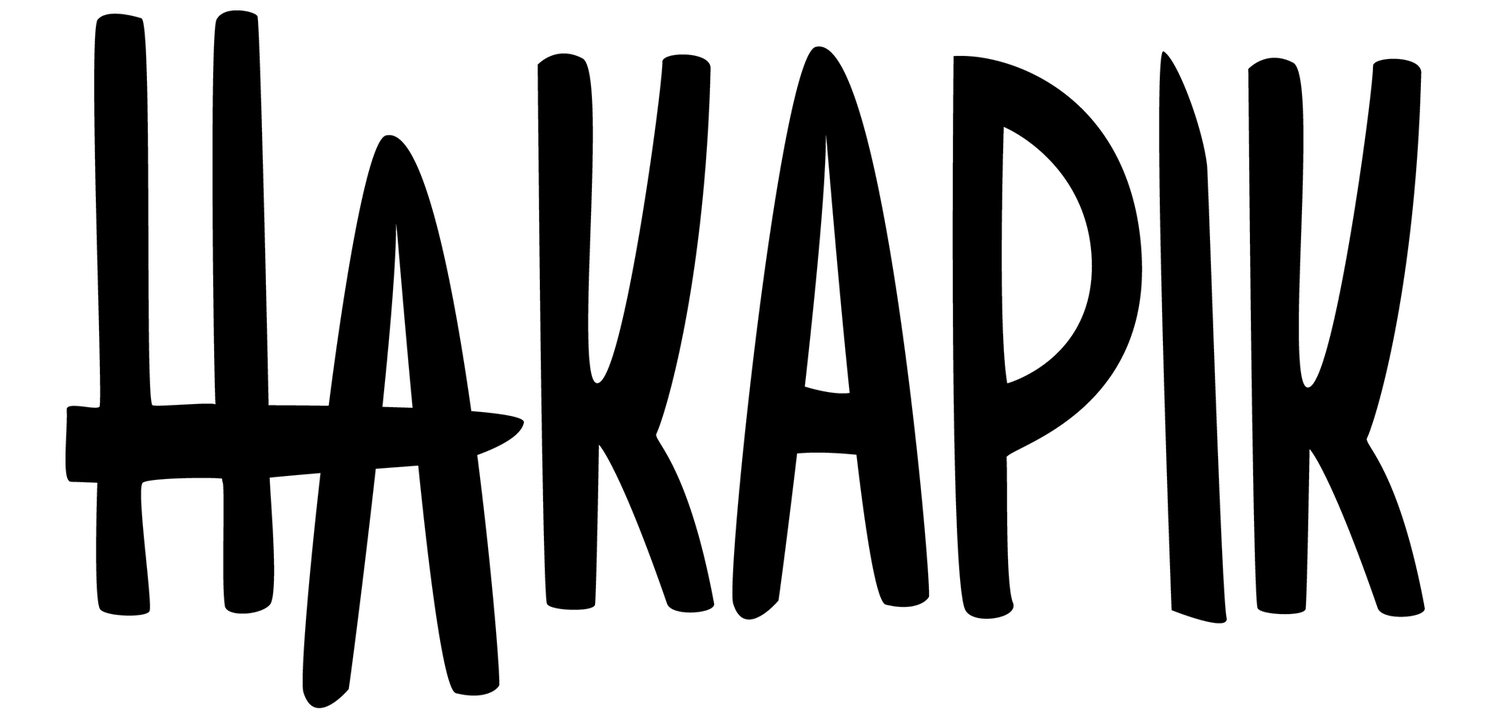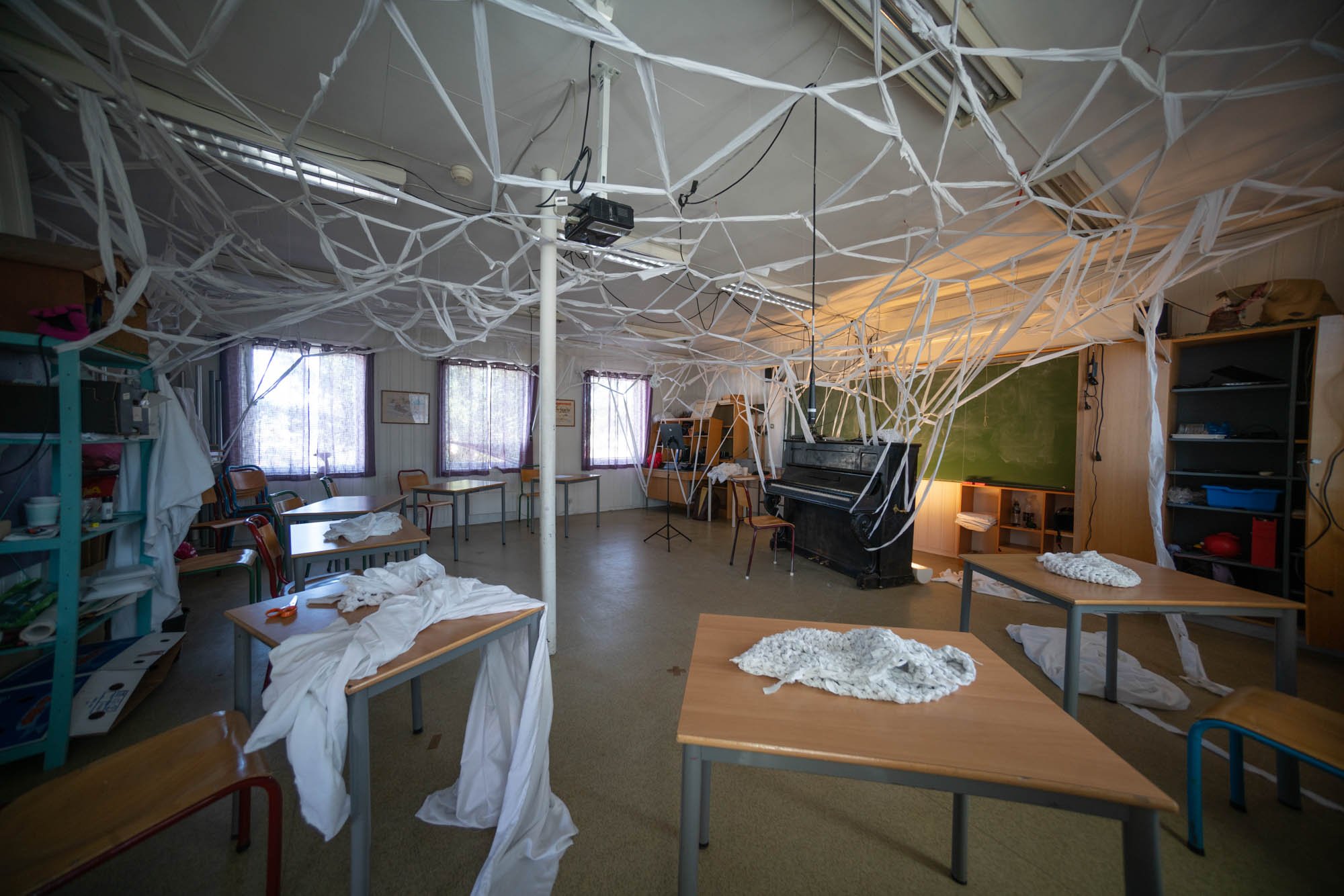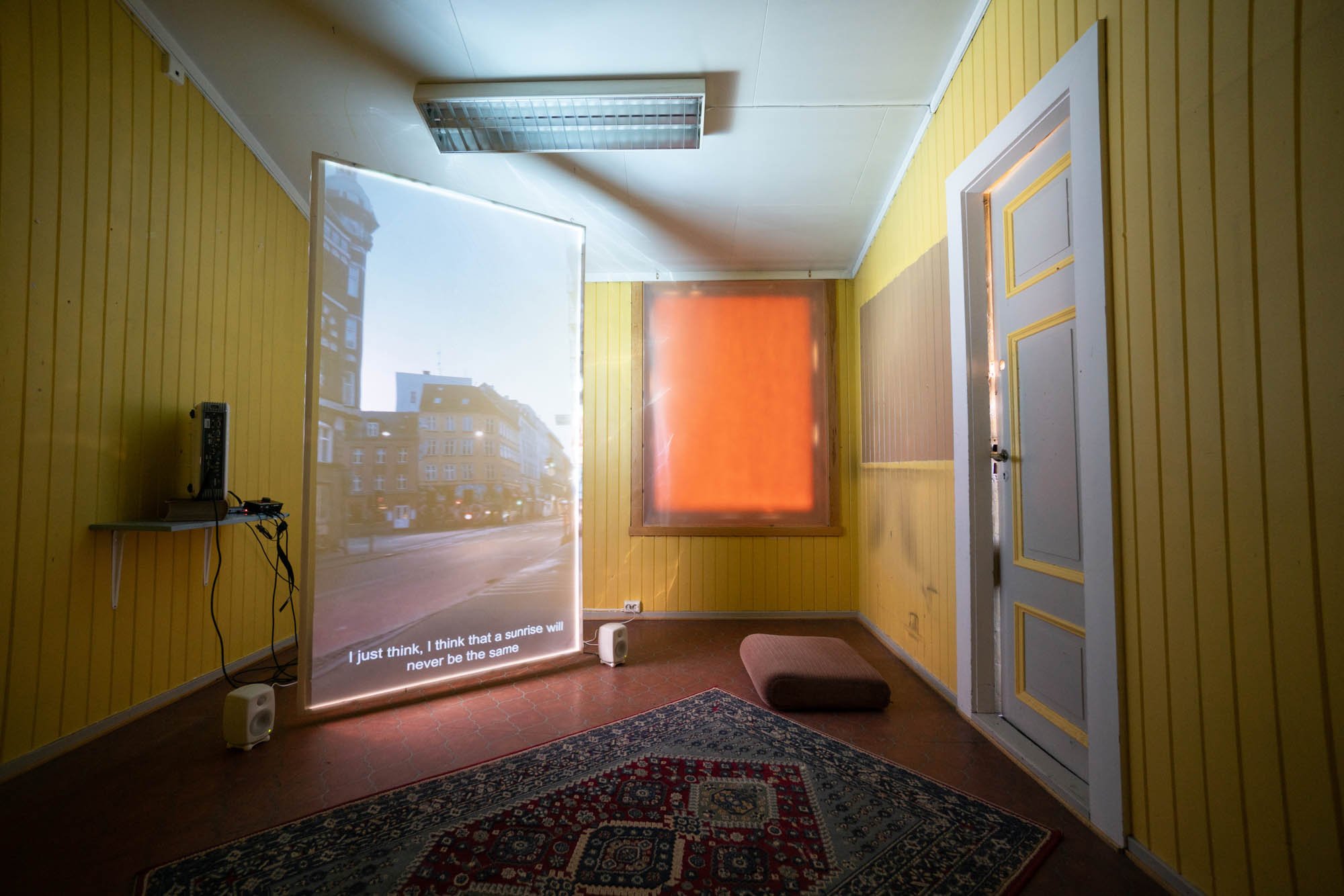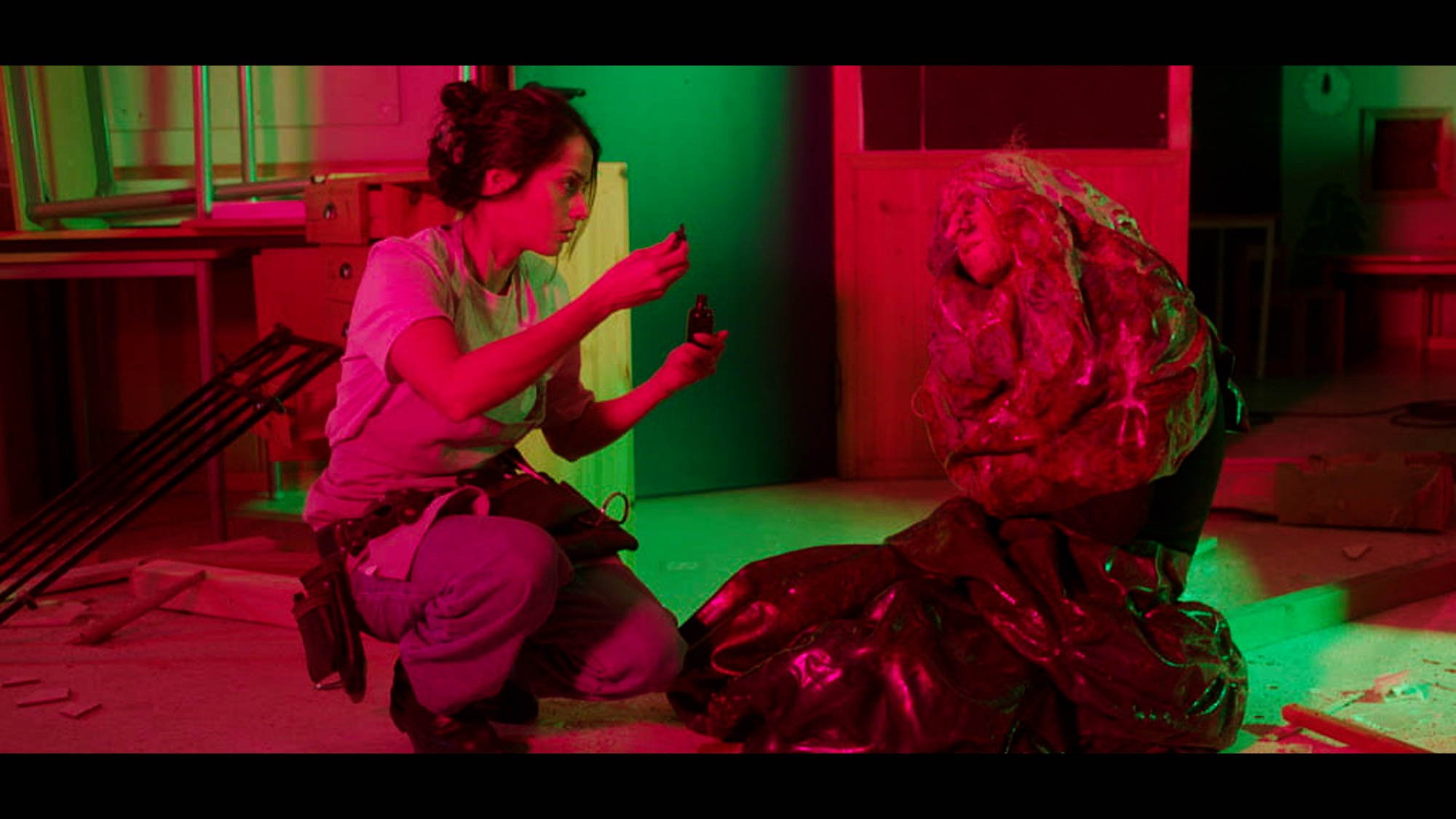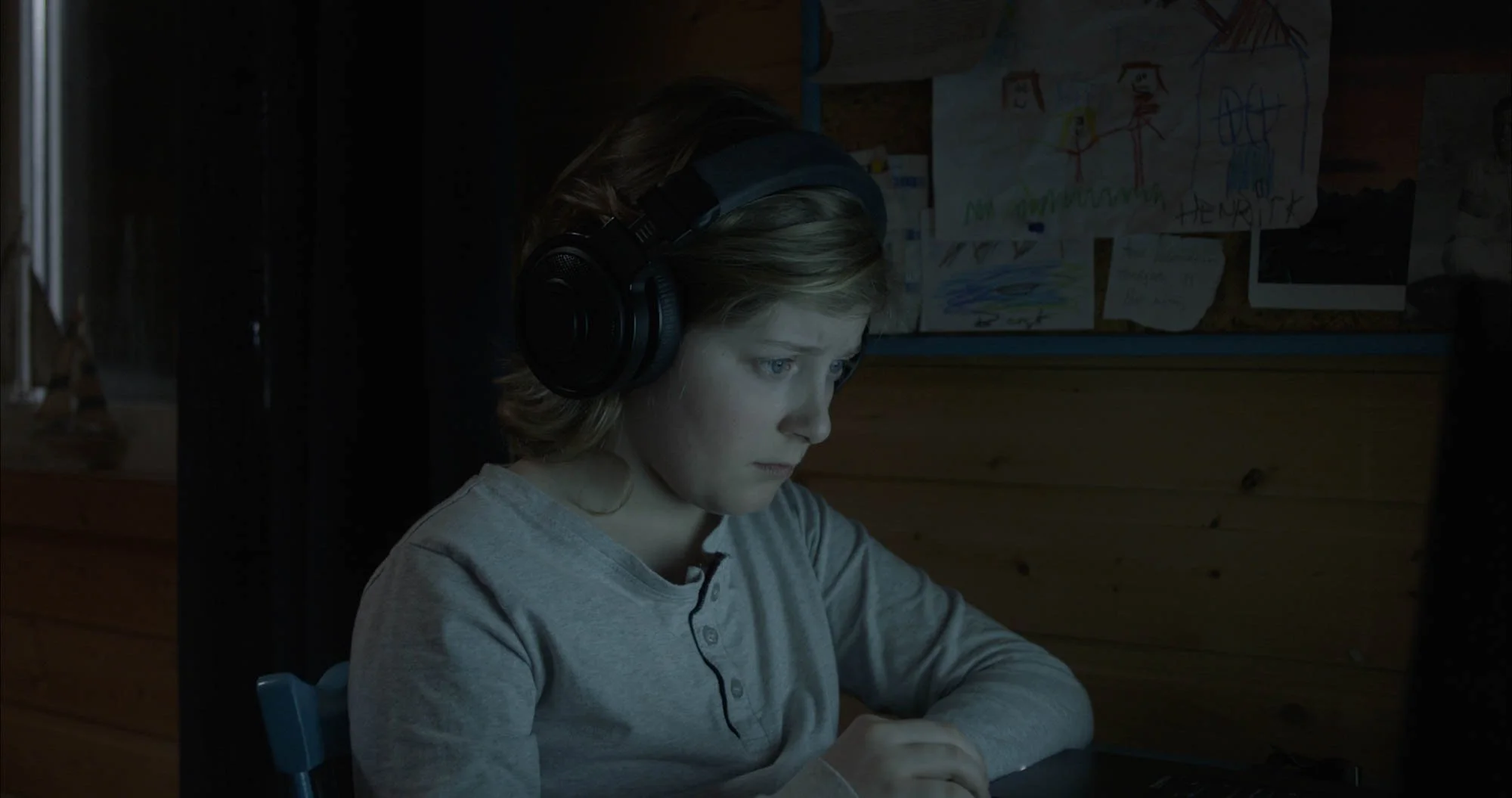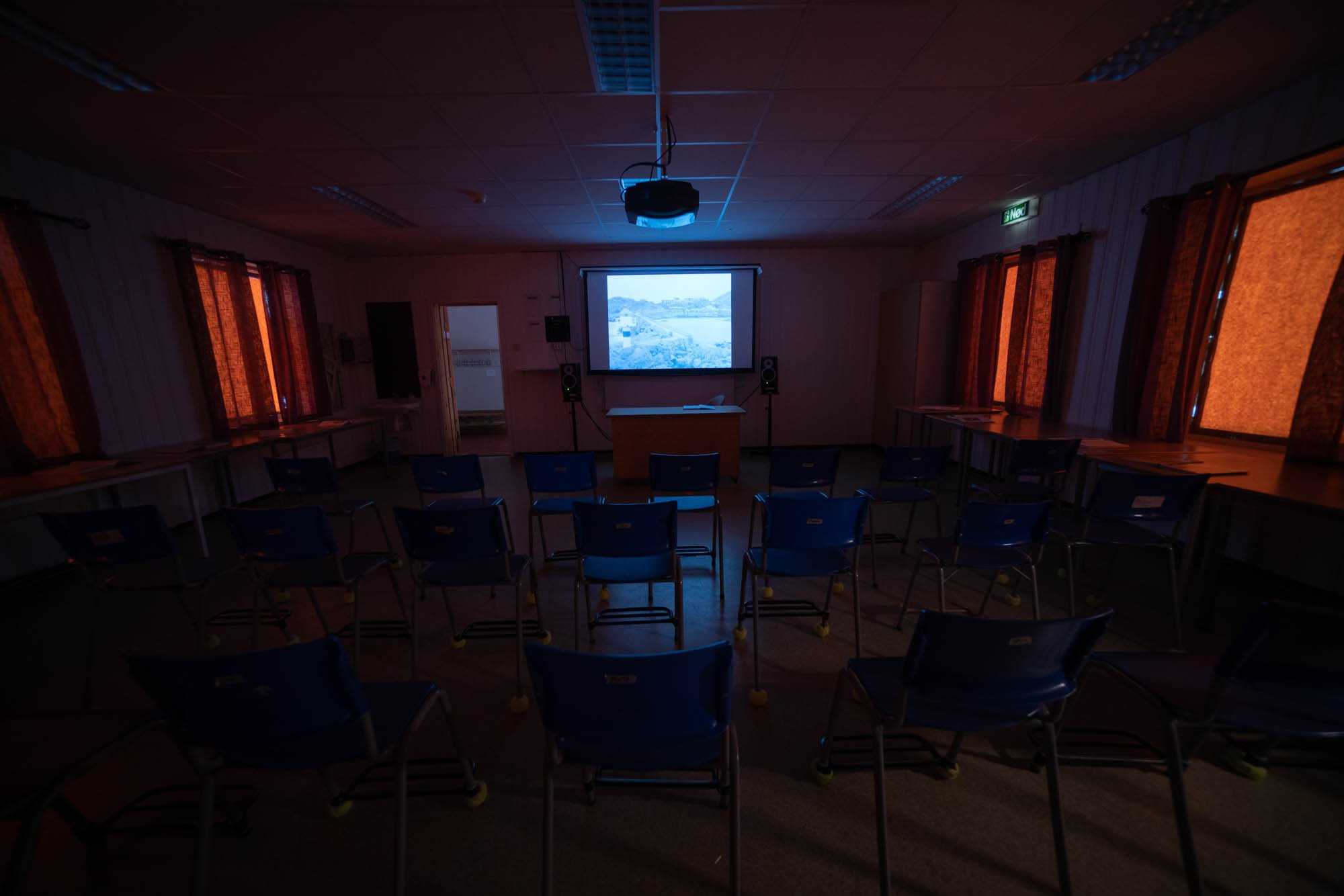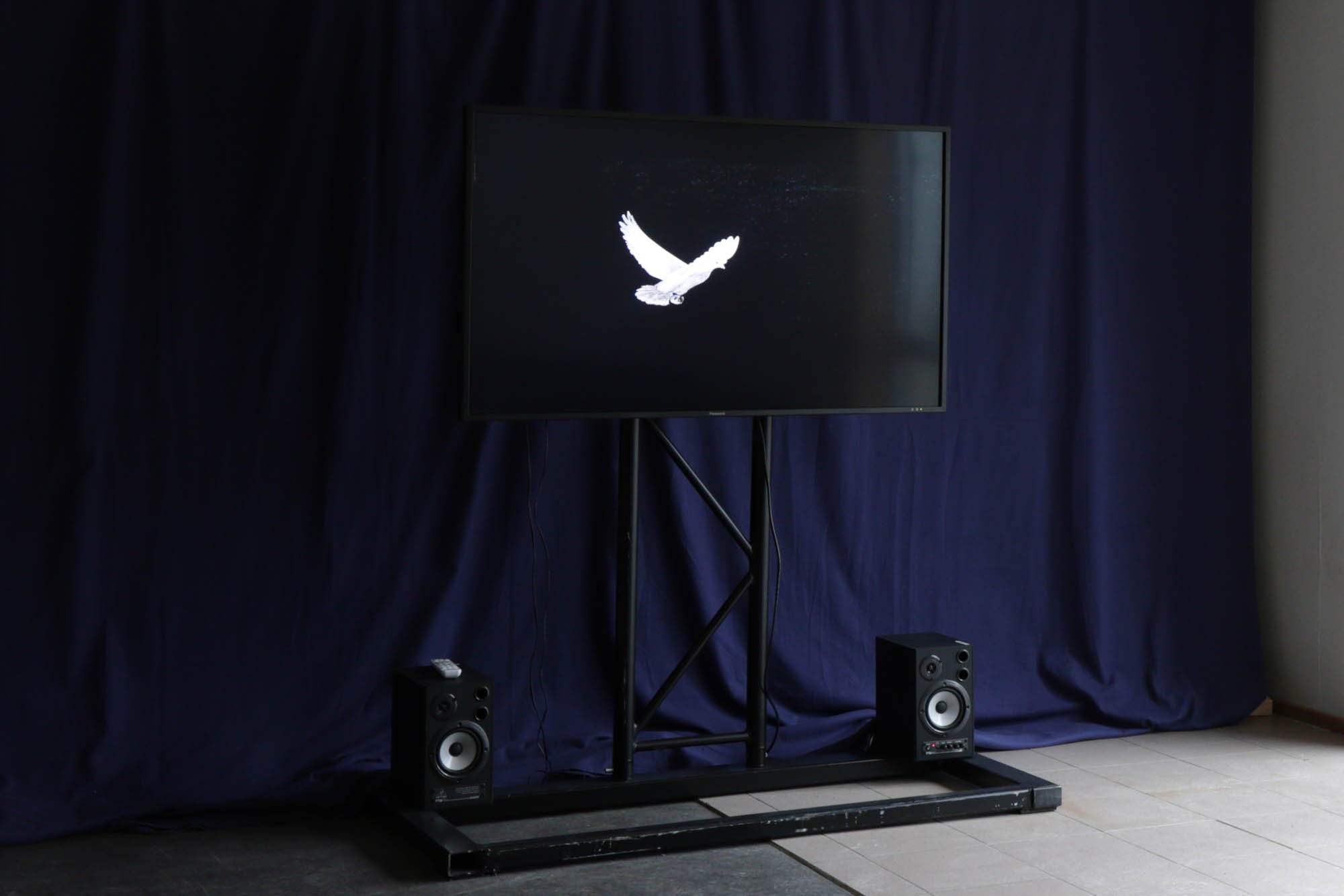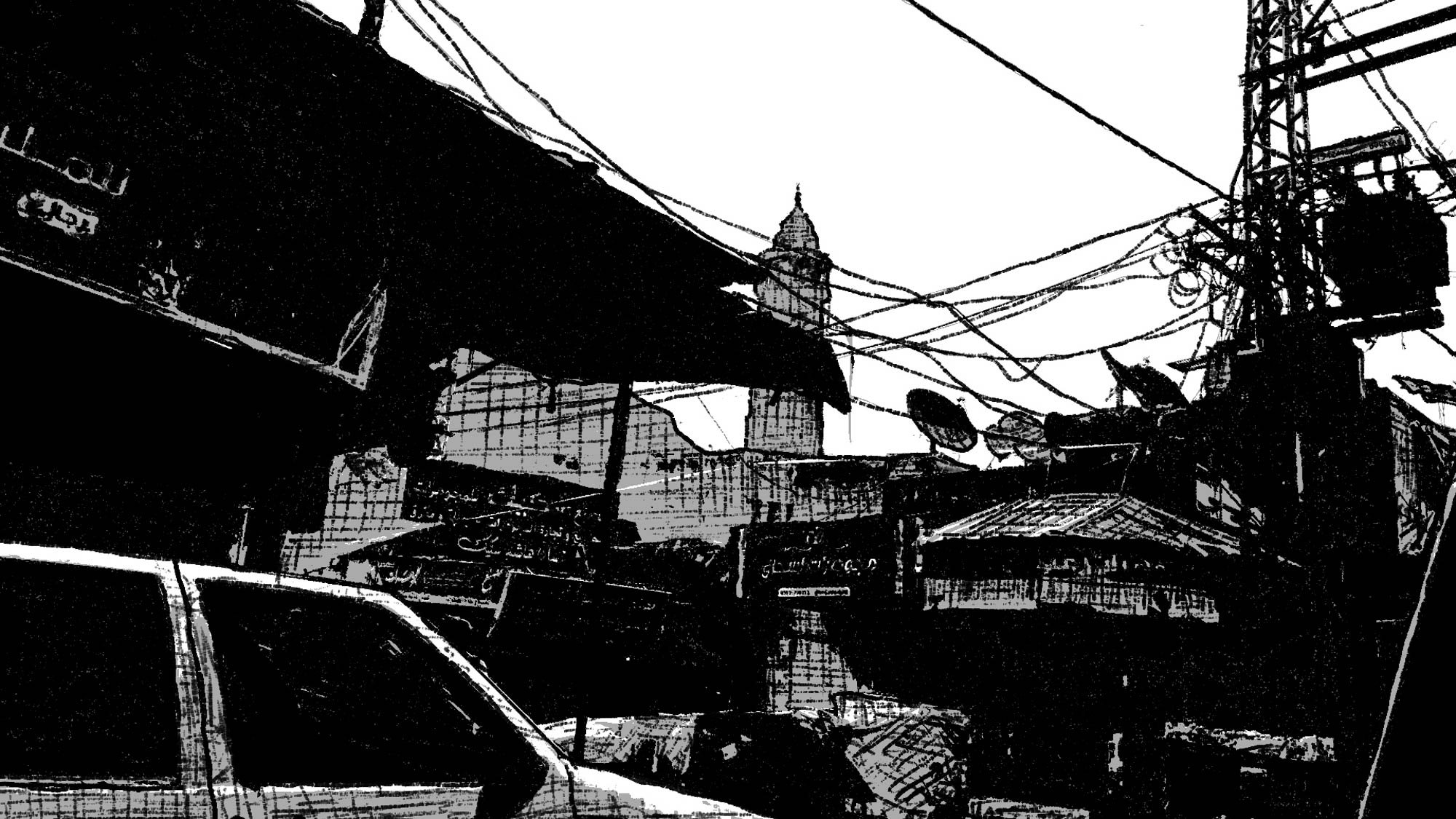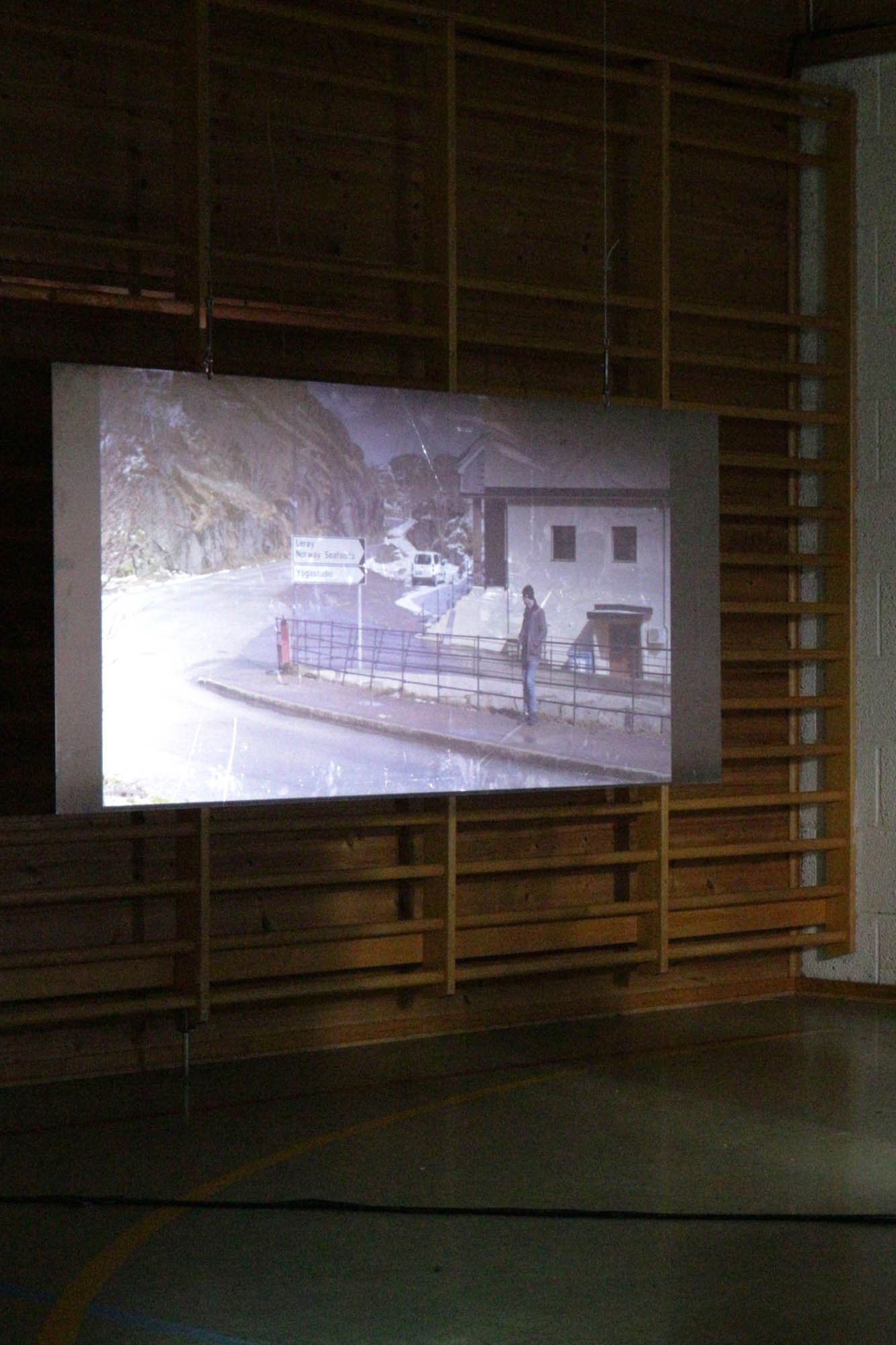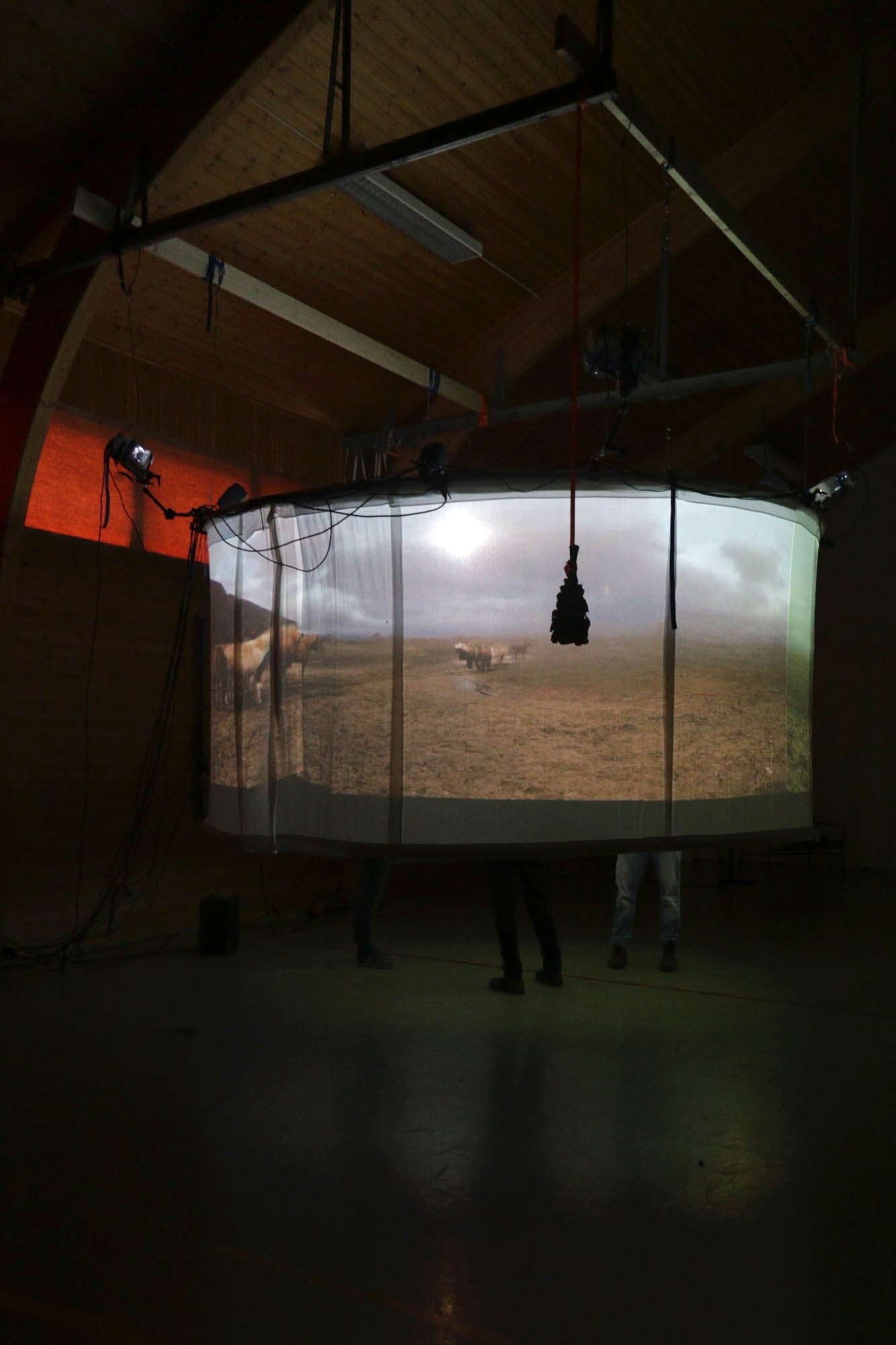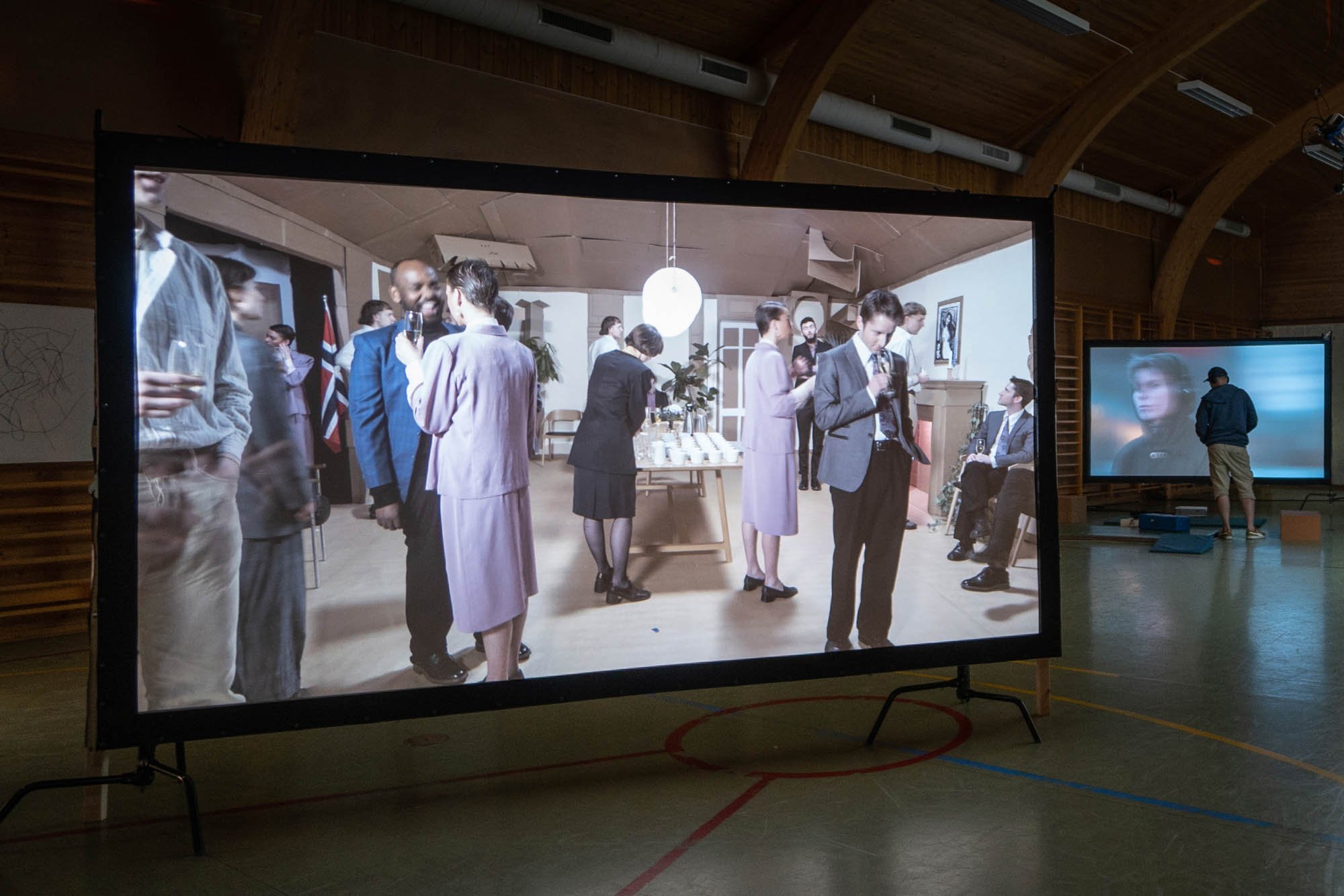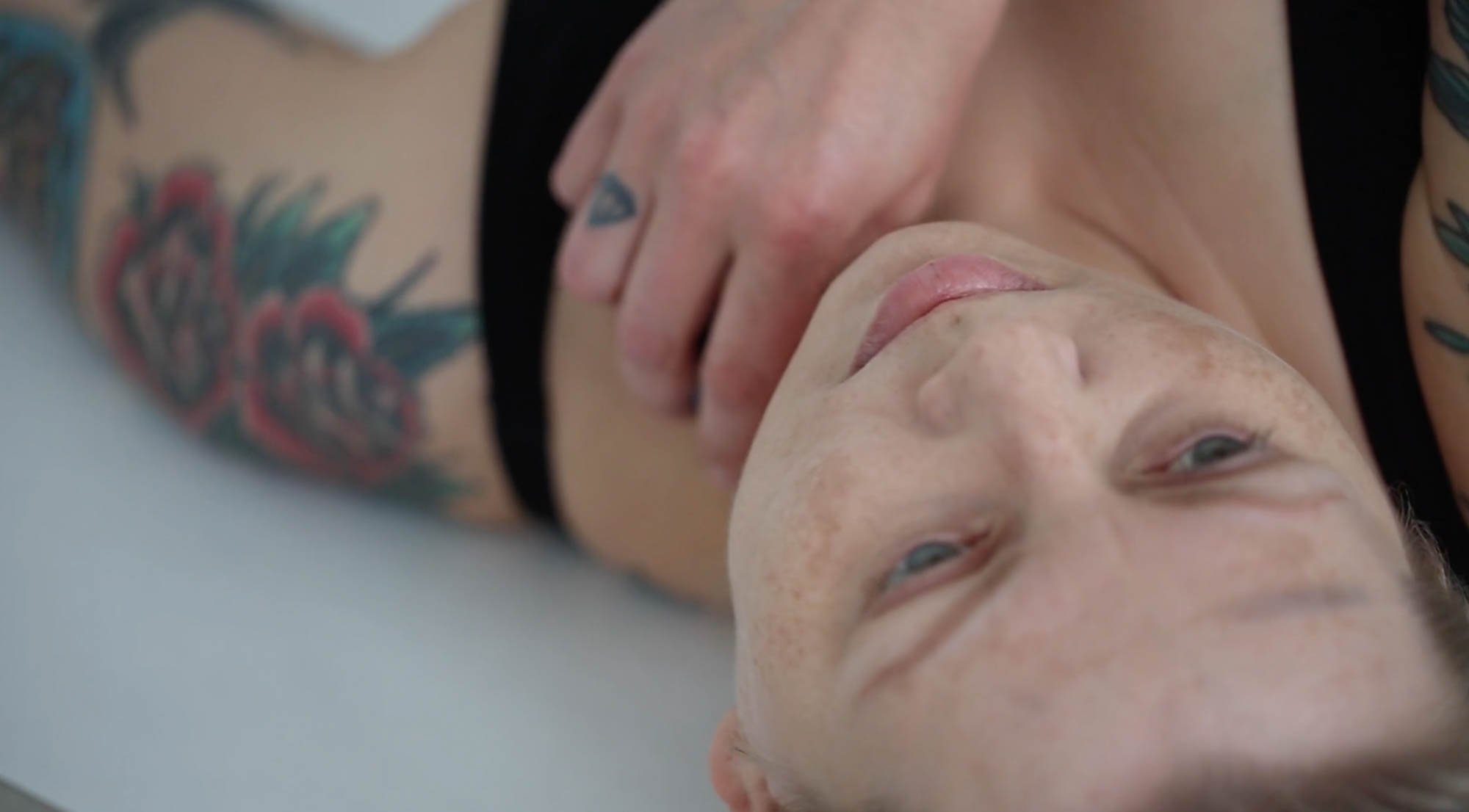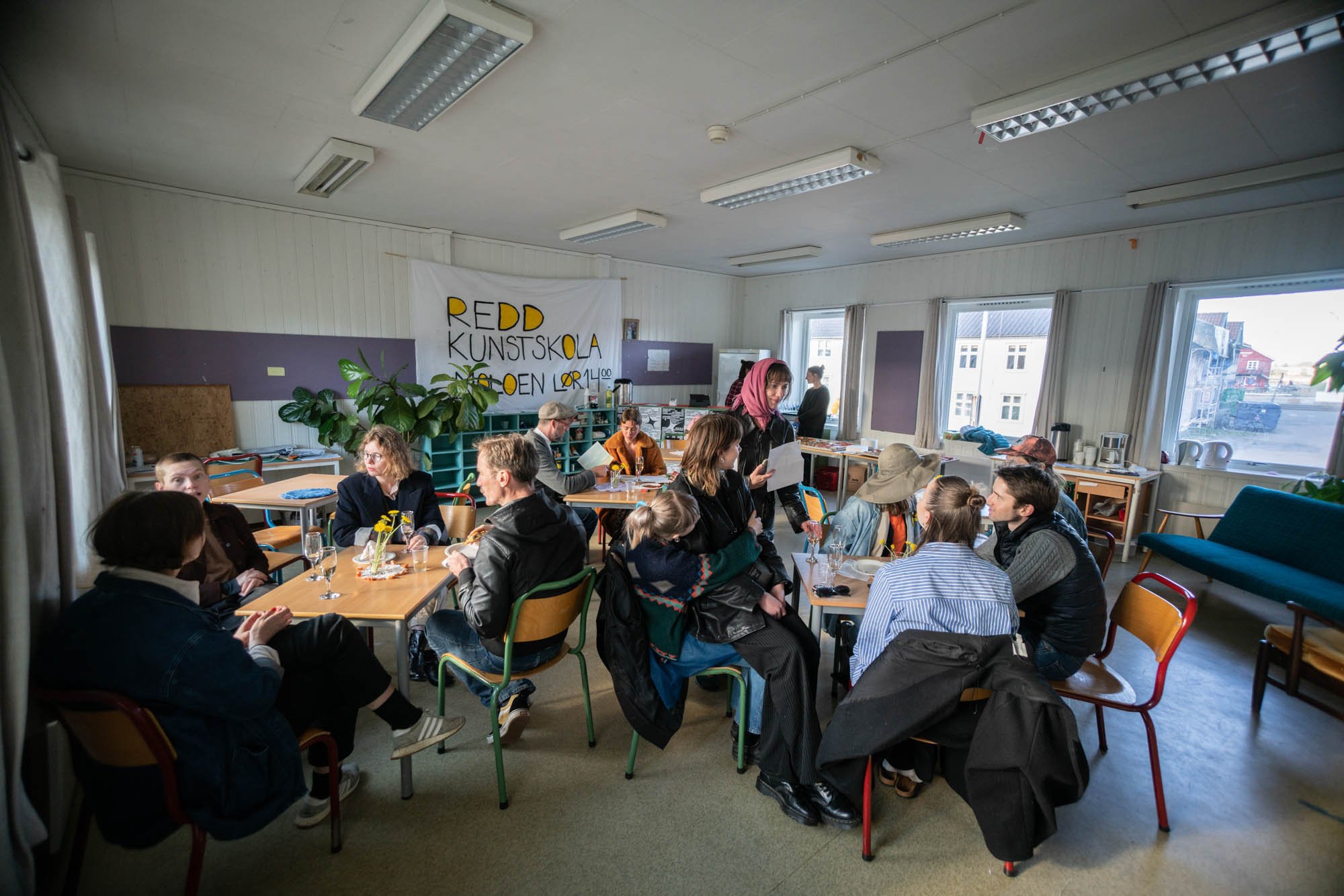Taking Back Autonomy
Review of the exhibition The Sun Oozed Out of Its Circle and Filled the Sky, degree show, Nordland Kunst og filmhøgskole (NKFS) – UiT The Arctic University of Norway. Organised/curated by Ina Hagen. Installed in an old primary school in Kabelvåg, Lofoten. 09.06.22 - 15.06.22.
After two years of studying through a pandemic and undertaking a political campaign, the students of Nordland Kunst og filmhøgskole have emerged on the other side of these challenges, delivering a high-quality degree show, built from a communal spirit and the embrace of contingency.
By James S. Lee
Student life can be hard, granted, but not many students feel compelled to give up their time during their studies to campaign to save their own academic institution from closure. But that is exactly what this bunch of students from Nordland kunst- og filmhøgskole (NKFS) have been doing. Their reward – for helping to save their school which got caught in a bizarre “catch-22” situation last year – was that their school in Kabelvåg was absorbed into the wider University of Tromsø academic structure, with their degrees now being granted by an institution based around 400 Kilometres (or 250 miles) away.
If that was not hard enough for any student class to deal with, no review of a degree show in the year 2022 can begin without the caveat that these students have obviously spent two thirds of their education being disrupted by a once in a century pandemic… Whatever these students achieve artistically should really be understood as remarkable.
A recently closed local school in Kabelvåg provides the location for the exhibition The Sun Oozed Out of Its Circle and Filled the Sky, the graduation exhibition of ten Nordland kunst- og filmskole students. The sense of the post-apocalyptic in the title is matched in the improvised and very rough-around-the-edges world the students have created for this one-weekend-only extravaganza of a degree show exhibition. The students have taken ownership of this former school, which seems newly abandoned, with tables and chairs and the school kids' own collages and artworks still to be found in the classrooms. This locale however provides a fresh suite of clearly improvised installation possibilities that a “white cube” space would not: a gym mat most likely found in a cupboard provides a space to lay on while watching a video; a basketball backboard becomes a projector mount; locker room benches become seating for a film installation. Improvisation and creativity is everywhere in this exhibition curated by the students in collaboration with former student – and now Oslo-based artist – Ina Hagen.
This “make do with what you have” attitude was perfectly on display in the first room I encountered as part of this exhibition, where a performance by Oscar Gränse was about to take place.
In a former music room, the school's upright piano took centre stage as I sat on a chair awaiting this performance to begin. A wireless microphone by the artist's mouth transmitted sounds (presumably to a looping device, then onto a set of speakers) of clicks and clucks which, over time, melded together to create a thick rhythmic soup. Over this backing track of sorts came an improvised melody which was played by the artist on the piano. Picked up by microphones placed in the room, these notes, looping and decaying, eventually formed (or should I say deformed?) into a synth-esque drone that swirled around the room.
This performance is but one example of the high capacity for technical control demonstrated within the student body. While the exhibition struggles occasionally in its fine details, often in terms of the actual installation of the works in the space, the education and collaborative focus of the school generally seems to have left room for the students to hone particular specialist skill sets, and subsequently contribute these to the projects of their classmates’. Within the exhibited film and audio productions here, we see these capacities and talents being put to good use.
Upstairs in the same building as the performance, Amalie Magdalena With Vedelsby presented a surprisingly touching film. Circadian Offbeats was a film which really rewards sitting down to watch in its entirety at 55 minutes. Now, having just stated the technical expertise to be found in the student cohort, this film's quality does not rely on any of that; this kind of Gonzo filmmaking may lack the sheen of some of her peers, but makes up for it in its charming dialogue and spirit. She explained to me that the idea for her degree show piece originally was to create a scripted dramatic film about two people finding solace and friendship after a drunken night out. Instead, she found herself recording the “real thing”, after an evening out in Copenhagen, on her smartphone. The film feels completely genuine – as I can only assume it is – with the dialogue at times funny, at times banal and, at times, flirty, as two people grow closer, with a special emotional punch being achieved when the two main characters begin sharing stories of their experiences of anxiety.
Moving on to the next former classroom, some very minor issues with the sound could not spoil the overall effectiveness of a film by Arjun Acharya. The 23-minute untitled film was a clever and highly enjoyable dramatisation of the production of a low budget horror film. I burst out laughing three or four times, with one of the biggest laughs reserved for the line of “keep the body parts flowing”, as the director and her production team marvelled over a suspiciously realistic human finger someone in the prop department “made” for their film within a film. It's a joy to watch what comes with a great final scene punchline that would be in any other horror film terrifying but, in this one, is played for laughs – and is all the more impactful for it.
Staying upstairs, in the adjacent room – with an adjacent theme to the previous exhibit – one can find the similarly very well made film called Vold ( “Violence”) by Emil Engesnes Bråthen. The film was nowhere near as shocking as the curator's introduction to it beforehand made me feel like it was going to be, which, unfortunately, meant I kept on waiting for the most shocking internet video one could watch to pop up on screen but it never came to pass. The film documents a young pre-teen kid staying up late whilst his parents party downstairs as he watches increasingly more violent videos online, culminating in a video of a violent assault of a partially clad, tied up woman. Do not be alarmed however: the scenes on the screen were recreations of videos found on the internet, rather than the “real deal”. But quite what I was supposed to feel afterwards I am not quite sure, other than the lurking feeling that whatever one can see on a screen is never quite as bad as what one can imagine or fear – the exact opposite message of the film, of course.
Transitioning to the larger part of the two exhibition spaces in the school – the gym hall – the first work I came to is that of Ali Jabaly. Well known already for large scale murals, Ali Jabaly is a somewhat familiar name (in Art World speak, still “an emerging artist”, but Jabaly is someone who has exhibited in Norway, and to much acclaim, before this exhibition). This work, which mixes in found footage and animation, shows footage of a bombing in Palestine and its aftermath (the artist moved to Norway from Palestine some years ago), followed by the artist's own animations – including a dove, a man screaming, and an eye lid closing – with a transition back into the found footage again, but this time played in reverse, as the bombed building magically becomes rebuilt.
The end result in its totality, however, is still an artist finding their feet in their new medium, it is safe to say. The animation effect over the found footage does not add anything artistically to the film, and the soundtrack too suffers from its shift from generically ominous to generically sentimental as the footage begins to reverse, and never quite adds to the whole of the film itself.
The Jeff Goldblum line from Jurassic Park: “You were so preoccupied with whether or not you could, you did not stop to think if you should”, kept on popping into my head as I tried to watch the films by Gustav O. Gunvaldsen at the back of the gym hall. One must give plaudits for being ambitious in the installation of a BA exhibition, experimenting with how a film is to be experienced in a specific setting, but the installation never quite added up to a satisfying film watching experience.
Gunvaldsen films “real scenes” from the life of an actor – known in the films as “Morten”– who plays them out for the camera, scenes mainly focussing on his own real life struggles as an actor.
The aluminium plates this two channel film were projected onto do not work in this context; the desired aim of creating a “fargespill” ( which can be translated literally as “colour play”) onto the walls of the gym hall via the reflections off the plates are at best distracting, and at worst, make parts of the films difficult to watch on the screens themselves, as the darks are too dark and the lights too bright.
The sound had massive issues too (but to be fair, a stronger curatorial hand could have been used to either move this installation, or spend more time fine tuning the sound in the echo-ey gym hall to improve the viability of this installation) as the speakers mounted to the back of these aluminium plates (meant to also vibrate the plates) could not produce enough volume to be heard above everything else in the room and produced way too much distortion – presumably distortion from being pushed too loud or mounted in polystyrene on the back – making it very difficult for a non-native Norwegian speaker like me to pick out and follow the dialogue.
The way these films are installed is a real pity as the acting was excellent (the main character of Morten, a professional actor and collaborator of Gunvaldsen, can plumb depths of comedic pathos which very quickly develop beyond the mere humorous and switch to tragic in a few lines or facial expressions); the concept behind the film is fantastic and ripe for years and years of artistic pursuit; some of the cinematography and shot composition is exceptional too. All these thoughts swirled around my head, as I ended up standing an inch from the screen trying desperately to hear the distorted dialogue, desperately feeling that this is a classic case of over-thinking and over-conceptualising.
The most impressively installed exhibit of the degree show, on a technical level, was a 360 degree immersive sound and film installation by David Bohl Andersen and his non-graduating, first year collaborator, Sunniva Trømborg – far exceeding what anyone should expect installation-wise from a BA student degree show. Five speakers and a sub bass convey audio that moves around you as four projectors fill the fabric, circular screen. The best way to describe the visual content would be to say “imagine if your cellphone could dream”. These “dreamlike” qualities begin with the footage of a car trip in Lofoten, overlayed with seemingly random footage – particularly at the start of the film loop. Escalators, shoe boxes and a floating Winnie the Pooh are green screened – deliberately shoddily – over the local Lofoten landscape. As the film goes on, the film veers from unsettling to hypnotic to banal. One scene of particularly high quality features a camera that seems to be attached to a horse running through a field, playing out over a particularly affecting synth pad based soundtrack, which gives the whole scene a hypnotic – and yes – dreamlike quality to it.
At nearly an hour long the film is almost definitely best not experienced like I did - i.e. in one go, as it does undeniably become boring in parts - but as something one can go in and out of, experiencing its surreal qualities in small doses, is a real joy.
In the other corner of the gym hall, what could have been a rather dull film about the merits or otherwise of the United Nations, turns out to be anything but. This exceptional film by Rebekka Christophersen, the daughter of a real life UN diplomat, brings together a total comprehension of the possibilities of cinema; from inventive set design, to split second perfect editing, to truly wonderful acting performances from all involved (even the silent extras), to fantastic sound editing and perfect framing. The colour grading and lighting are so well done too, laying down a strong foundation for our actors to shine in every scene. But to talk about its technical aspects alone does the film a disservice as it diminishes the playfulness that can be found within. For example, one scene in particular involving our character/ filmmaker frantically washing a table is a special moment that brings to mind contemporary dance: the camera becomes a dance partner and the fourth wall becomes broken. Worth mentioning also is a speech that is so perfect for its performance of a political speech, it enters an uncanny valley, providing both horror and humour in equal amounts.
Staying in the gym hall, an untitled film by Emilie Aagesen documents the journey through Copenhagen of a young female. Whilst shot in Copenhagen, it could in reality be any major European city. The film is a little meandering, much like the character it follows, and maybe leaves it a little too open for us as viewers, apart from to say – rather than make us feel – that it can sometimes be a little overwhelming, or lonely, or even a little scary, in a big city. One true highlight of the whole work however is the moment near the end of the film when the camera points towards the backs of passing cyclists, providing a moment of poetry in the mundane, as the streets of Copenhagen come alive in the listener's ears, finding an immersive sonic landscape ringing and bustling, as our camera leaves our protagonist to focus on the sublime of the city itself.
Filling out the gym hall are three subtle pen drawings by Eili Bråstad Johannessen, alongside some sculptures on the gym hall floor, made of branches wrapped partially in yarn. The simple contextual placement of these sculptures by these line drawings give both an added sensibility and intrigue, demanding the viewer see the aesthetic similarities between these two different kinds of works.
These images – as intriguing as they are – were made all the more powerful for me after going back to see a film containing the recordings of sexual assault survivors speaking about their ordeal, as part of a film made by Johannessen, presented in a locker room at the back of the gym hall. The drawings exhibited, it seems, are the drawings made by the artist as part of this very film, tracing her body with marker pen on the floor onto paper. What could have simply been abstract line drawings turn out to be a manifestation of resistance; taking back autonomy over one's body by incorporating it into art.
“Taking back autonomy” is maybe a good way to think of the exhibition and what these students have done these past years in their political engagements too. After the trip into the darkness for these installations, upon re-entering the world, I watched the camaraderie and communal spirit of these students, gathered around a barbecue in the arctic evening sun. It struck me that this burst of activity over the weekend is a throwback to a previous, pre-pandemic age; with talks and performances and communal eating integrated into the programming, the amount “on offer” and energy on display could also be some kind of “making up for lost time” after the pandemic. It is also a reminder that most of the successes and failures of this degree show are shared amongst this small group, with so many collaborating on films or projects together, and relying solely on each other for input and critique during a pandemic in a small town. This is almost certainly the first shot at exhibiting for most of these students too. And with the students having taken a major role in saving their own art school, by good old fashioned protesting and campaigning – including occupying their local council’s offices – one can safely say that things are not so much surviving in Kabelvåg but rather positively thriving. Like their new colleagues at The Academy of Arts in Tromsø, this far from ideal situation for creative prosperity does not really show in the quality of their works presented in the exhibition.




